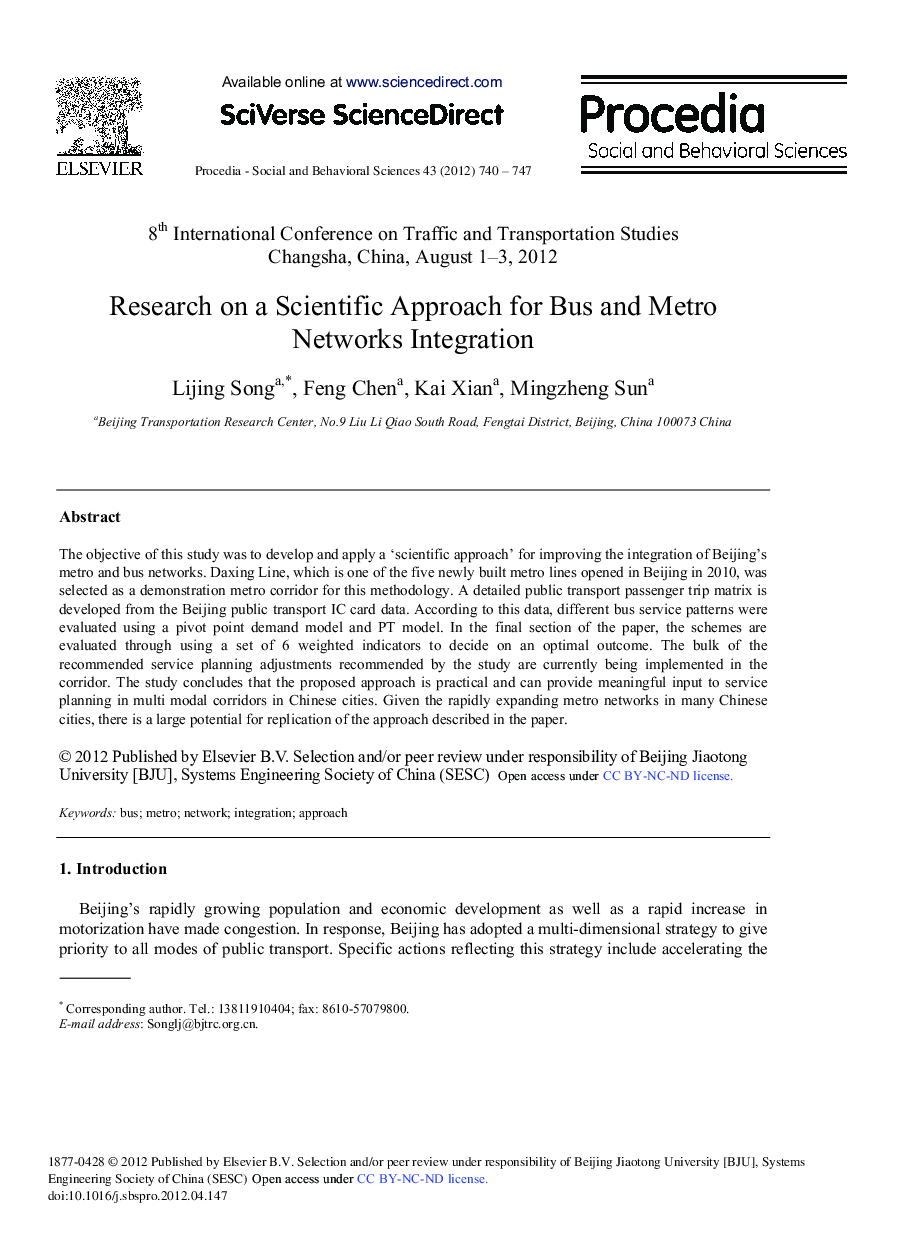| Article ID | Journal | Published Year | Pages | File Type |
|---|---|---|---|---|
| 1122156 | Procedia - Social and Behavioral Sciences | 2012 | 8 Pages |
The objective of this study was to develop and apply a ‘scientific approach’ for improving the integration of Beijing's metro and bus networks. Daxing Line, which is one of the five newly built metro lines opened in Beijing in 2010, was selected as a demonstration metro corridor for this methodology. A detailed public transport passenger trip matrix is developed from the Beijing public transport IC card data. According to this data, different bus service patterns were evaluated using a pivot point demand model and PT model. In the final section of the paper, the schemes are evaluated through using a set of 6 weighted indicators to decide on an optimal outcome. The bulk of the recommended service planning adjustments recommended by the study are currently being implemented in the corridor. The study concludes that the proposed approach is practical and can provide meaningful input to service planning in multi modal corridors in Chinese cities. Given the rapidly expanding metro networks in many Chinese cities, there is a large potential for replication of the approach described in the paper.
